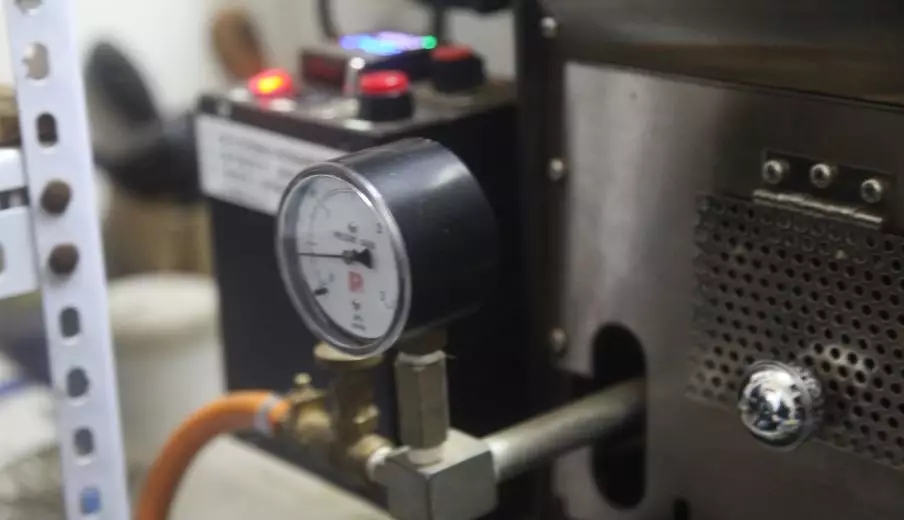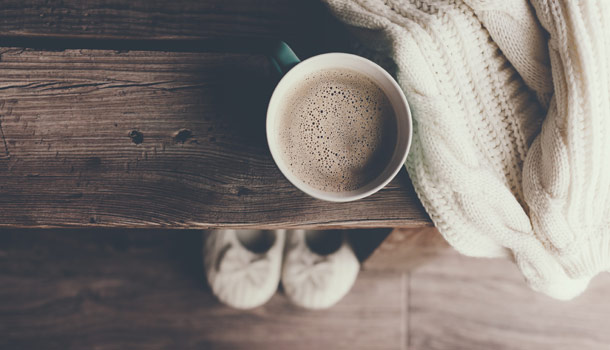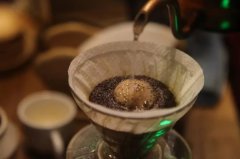Hand brewing skill | how to make deep-baked coffee? Degree of grinding of deep-roasted coffee
Professional coffee knowledge exchange more coffee bean information please follow the coffee workshop (Wechat official account cafe_style)
Earlier, we talked about how to flush light-baked and moderately baked beans. Today, I would like to talk to you about how to flush deeply-baked beans.
When it comes to coffee, many people will think of the bitter taste and then feel very repellent. Even if they enter the pit, they will think that coffee cannot be regarded as fine coffee if there is no acidity and no fragrance of flowers, so deeply roasted beans are never considered by them. There is nothing you can do about radish and green vegetables. But does deep-baked beans have to be bad? The editor is here to share with you some skills of deep-boiled and baked beans!

Before we get to the point, let's recall, what are the factors that affect coffee brewing?
Baking degree, boiling water temperature, grindability of coffee beans, powder / water ratio.
The difference between light baking and deep baking is not only in baking time and firepower; in flavor, lightly baked beans tend to have fruit acid flower flavor, while deep baked beans prefer flavors such as chocolate and caramel.
Characteristics of deep-baked beans

Deep-baked beans are relatively loose in texture, have good water absorption, the powder layer is easy to expand by water, and coffee powder is easy to float on the surface, but the bitterness of coke and other miscellaneous flavors will be relatively heavier. Most of the high-quality beans are in medium light to medium deep, and most of them are roasted moderately.

Because the degree of baking is heavy (long baking time and high temperature), the bitterness is more obvious, and the more obvious the bitterness is, the less the flavor except bitterness is, and the more bitterness is, it will outweigh the other flavors, that is, the flavor characteristics of fine beans. The flavor of flowers, fruit acid, nuts, chocolate, cream and so on will be worn away with the deepening of baking. In fact, some poor quality beans will do deep baking, with bitterness to cover up the mixed taste of poor beans, which is why when it comes to coffee, everyone will think it is bitter!
The skill of boiling and baking beans
1. Degree of grinding & water temperature

Grinding coffee beans is the first step in making coffee, but it is also a step that many people are prone to failure. Because the structure of deep-baked beans becomes loose and brittle when baked, and the flavor substances inside are more easily extracted, the editor will choose rough grinding, probably as thick as coarse sugar, if the grinding is too fine, it will easily lead to over-extraction. On the other hand, rough grinding can reduce the contact area between coffee powder and water, so that coffee is not easy to bring out bitterness and astringency due to high temperature water at the beginning of brewing, combined with slow brewing, prolonging the extraction time, and lowering the water temperature in the latter section. Then bring out the flavor and taste substances slowly.

In terms of water temperature, the editor will use the water temperature between 84 and 88 degrees to cook. Lowering the water temperature can slow down the extraction speed and reduce the bitterness of substances extracted.
2. Ratio of powder to water
Because most of the deeply baked beans tend to taste mellow, in order to enjoy the strong bitterness, sweetness and lasting aftertaste, the editor will cook them with a ratio of powder and water from 1:13 to 1:14.

When extracting deep-roasted coffee, if the concentration is not sufficient, the overall texture will decline, and compared with other flavors, the bitter taste is irritating and prominent, and there will be scorched taste. So if you want to enjoy the lasting aftertaste of deep-roasted coffee, you might as well choose a high concentration of extraction.
3. Technique
| | soft & slow-Water injection should be gentle, take your time in circles |

Gentle injection of water to reduce the impact of water on the powder bed. To control the height of the water level in the filter cup, slowly pour water at a lower height after steaming, and then let the coffee powder in the filter cup seem to be soaked. This can slow down the pace of extraction and easily produce coffee with a soft taste and a solid taste.
Slowly pour water on the powder bed from the inside to the outside and then from the outside to the inland. Too fast a circle will increase the stirring effect of the water on the coffee, and it is easy to make the medium and deep roasted beans bitter. Try to reduce the stirring of the powder bed and try to extract the taste of coffee by soaking. This can effectively control bitterness and astringency.

If you want to taste more mellow, you might as well try volcanic flushing! Because the middle powder layer is thick, it is mainly filled with water in the middle about the size of a 1-yuan coin. The key point of extraction is the full extraction of the first half without destroying the powder layer. The second half is uniform water injection, in order to prevent excessive extraction in the middle, play a dilution role.
Take [Jamaica Blue Mountain] as an example.

Parameters: KONO filter cup, water temperature 86 ℃, grind degree is BG 6m (Chinese standard 20 sieve pass rate 47%), powder / water ratio 1:14, (steaming starts timing) extraction 1g / kg 39x 50 ".

Technique: 16 grams of powder, 30 grams of water steaming for 25 seconds, in the middle of the one-dollar coin size position slowly water injection to 125 grams section, the water level dropped 2 / 3 slowly to 225 grams to end boiling.

Flavor: full-bodied, full-bodied chocolate on the palate, slightly sour with fruit, caramel back to sweet and long-lasting.
Important Notice :
前街咖啡 FrontStreet Coffee has moved to new addredd:
FrontStreet Coffee Address: 315,Donghua East Road,GuangZhou
Tel:020 38364473
- Prev

Why do you get fatter and fatter when you drink coffee? Change your ingredients and habits!
Professional coffee knowledge exchange more coffee bean information Please follow the coffee workshop (Wechat official account cafe_style) with the development of economy and trade, more and more people fall in love with drinking coffee, and more and more popular changes, from the added ingredients, brewing methods and pull-out patterns, have reached the level of showing off skills; there are various competitions, both selected to speed up the promotion of coffee production
- Next

Coffee cold knowledge | Why does coffee smell good and taste bitter?
Professional coffee knowledge exchange more coffee bean information please follow the coffee workshop (Wechat official account cafe_style) every time the coffee beans are ground into powder, it smells good, hot water goes to the aroma overflowing, while brewing while smelling the aroma of coffee is a kind of enjoyment! After brewing, I couldn't wait to take a sip. Wait, did I drink fake coffee? Just rushed
Related
- Beginners will see the "Coffee pull flower" guide!
- What is the difference between ice blog purified milk and ordinary milk coffee?
- Why is the Philippines the largest producer of crops in Liberia?
- For coffee extraction, should the fine powder be retained?
- How does extracted espresso fill pressed powder? How much strength does it take to press the powder?
- How to make jasmine cold extract coffee? Is the jasmine + latte good?
- Will this little toy really make the coffee taste better? How does Lily Drip affect coffee extraction?
- Will the action of slapping the filter cup also affect coffee extraction?
- What's the difference between powder-to-water ratio and powder-to-liquid ratio?
- What is the Ethiopian local species? What does it have to do with Heirloom native species?

